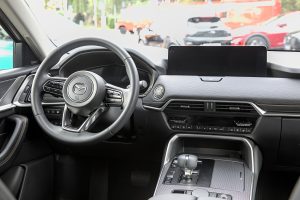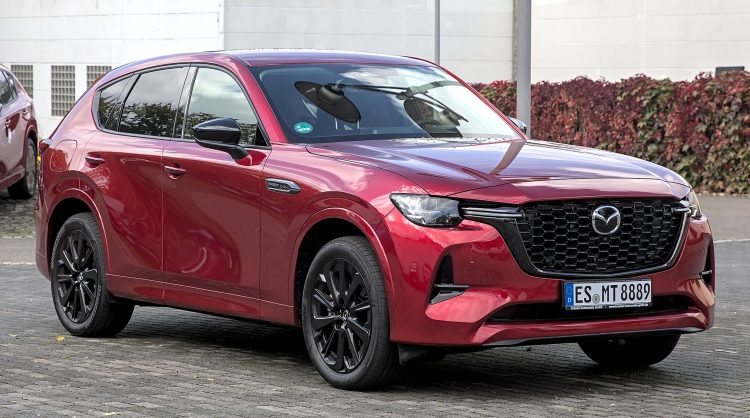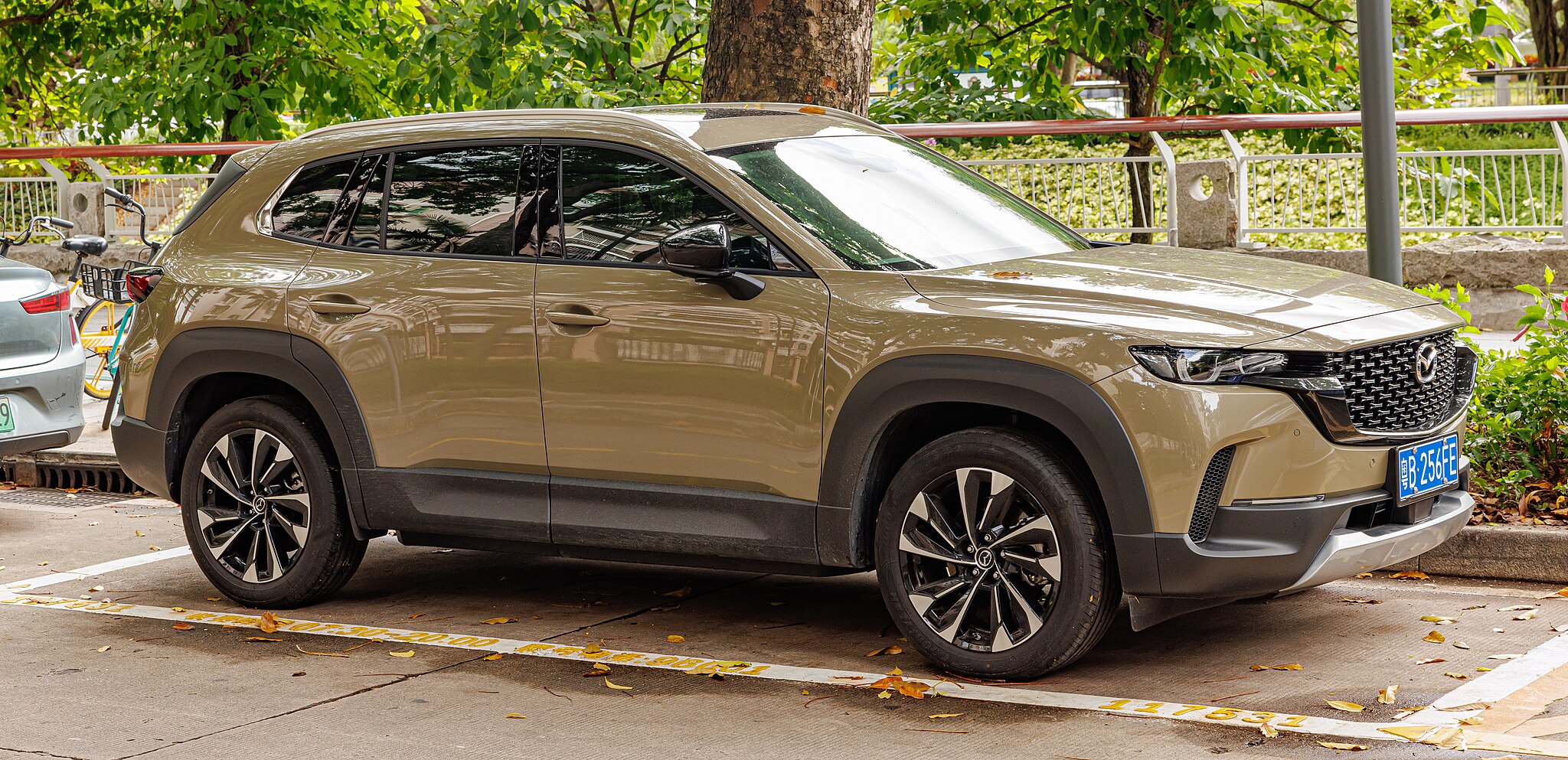Introduction
In the realm of automotive aspirations, Mazda aims to ascend to the upper echelons, akin to a footballer vying for a spot in a top-tier team. Enter the Mazda CX-60, a contender poised to challenge the giants of the large SUV segment. But does it have what it takes to emerge as a champion?
The CX-60 represents Mazda’s foray into the realm of five-seat large SUVs, offering ample space, enhanced power, and a touch of luxury that sets it apart from its predecessor, the Mazda CX-5. Notably, it marks Mazda’s debut in the plug-in hybrid (PHEV) arena, signaling its intention to lure buyers away from competitors like the PHEV Toyota RAV4, while also encroaching upon the territory of higher-priced rivals such as the Audi Q5, BMW X3, and Lexus NX.
In addition to the plug-in hybrid variant, the CX-60 offers a diesel mild-hybrid engine available in two power outputs, with a pure-petrol version slated for future release.
Performance & Drive

The CX-60 offers an array of powertrain options, each catering to diverse driving preferences and needs. The entry-level engine, a turbocharged 197bhp 3.3-litre, six-cylinder diesel (e-Skyactiv D200), delivers ample low-end torque, facilitating brisk acceleration. Although slightly slower than its Audi Q5 counterpart, it performs admirably in real-world driving scenarios.
Alternatively, the 251bhp e-Skyactiv D254 variant showcases heightened performance, boasting a brisk 0-60mph time of 7.0 seconds. However, the true speedster of the lineup is the PHEV configuration, featuring a 2.5-litre four-cylinder petrol engine and a 134bhp electric motor. With a combined output of 323bhp, it accelerates from 0-62mph in a swift 5.8 seconds.
For company car drivers, the PHEV’s 17.8kWh usable capacity battery and 39 miles of electric-only range offer compelling incentives. Nonetheless, real-world electric range falls short of expectations, lagging behind rivals like the Lexus NX 450h+ and Toyota RAV4 PHEV.
In terms of handling, the CX-60 demonstrates respectable agility, although its steering lacks the sharpness found in competitors like the Ford Kuga or even it’s own model the Mazda CX-5. Mid-corner bumps unsettle the vehicle, resulting in noticeable body roll and compromised stability. While the suspension effectively minimizes body roll during everyday driving, it sacrifices ride comfort, contributing to a fidgety and occasionally jarring experience for occupants.
Passenger & Boot Space Exploration
Navigating the interior of the Mazda CX-60 reveals ample room and clever storage solutions for both passengers and cargo. Up front, occupants are treated to a spacious environment, with generous leg and headroom accommodating taller individuals comfortably. The layout ensures that elbow room is plentiful, preventing any unwanted collisions with the center console.
Storage options abound, featuring convenient amenities such as cupholders, a roof-mounted sunglasses holder, and extensive door cubbies. While the glovebox and phone tray offer ample space, the center armrest cubby disappoints with its shallow depth.
Moving to the rear seats, the CX-60 provides a modest increase in space compared to its smaller sibling, the Mazda CX-5. Though not as expansive as some rivals like the Volvo XC60, there is ample room for two adults to relax comfortably. Opting for the panoramic roof adds a touch of openness to the cabin, though tall passengers may prefer to forgo this option to maximize headroom.
A third passenger in the rear center seat may find short journeys tolerable, though they will contend with a central floor hump. The rear seat backrest offers a two-stage reclining function, though its impact on comfort is minimal. Exiting the rear seats may prove slightly challenging due to obstructed door openings caused by the wheel arch.
In terms of cargo space, the CX-60 boasts a capacious boot with 570 liters of storage capacity with the rear seats up, expandable to 1,726 liters with them folded down. This provides ample room for luggage, matching competitors like the Volvo XC60 and Honda CR-V. Thoughtful features such as a storage net and a 12V power socket enhance practicality, while the wide, square opening facilitates easy loading.
The rear seats offer flexibility with a 40/20/40 split backrest, and remote folding levers on the side further enhance convenience. However, the CX-60 does not offer a seven-seat configuration, necessitating consideration of alternative options for larger passenger requirements.
In summary, the Mazda CX-60 excels in providing spacious accommodations for four adults, coupled with a versatile and practical cargo area. While rear seat adjustability and access could be improved, the CX-60’s overall practicality makes it a compelling choice in its segment.
Exploring Buying & Ownership of the Mazda CX-60
When it comes to selecting a Mazda CX-60 model, the diesel variants emerge as the top contenders, offering not only affordability but also commendable performance. The entry-level two-wheel-drive e-Skyactiv D200 presents an enticing proposition, undercutting competitors like the Audi Q5, BMW X3, and Mercedes GLC by a significant margin. While PCP finance rates may be higher, the CX-60’s predicted depreciation aligns with that of its rivals.
For company car drivers, the PHEV CX-60 presents an intriguing option. Despite its impressive-sounding fuel efficiency figures, regular charging is essential to maximize the PHEV’s potential.
In terms of trim levels, each variant offers a generous array of features, with the Exclusive-Line trim standing out for its comprehensive package. The Homura model adds a sportier touch with enhanced aesthetics and additional comfort features, while the top-spec Takumi elevates luxury with premium materials and advanced amenities.
In terms of reliability, Mazda performs above average, providing reassurance to prospective buyers. However KIA offers a better warranty for example.
Safety is a key focus for the CX-60, as evidenced by its impressive five-star Euro NCAP rating. Standard features such as blind-spot monitoring and available optional packs further enhance safety and convenience.
In conclusion, the Mazda CX-60 presents a compelling option for buyers seeking a blend of affordability, performance, and safety. While there may be considerations such as high PCP rates and alternative PHEV options for company car drivers, the CX-60’s well-equipped interior, economical engines, and strong safety credentials make it a worthy contender in the competitive SUV market









